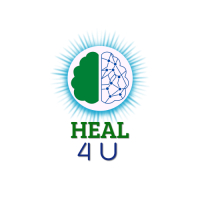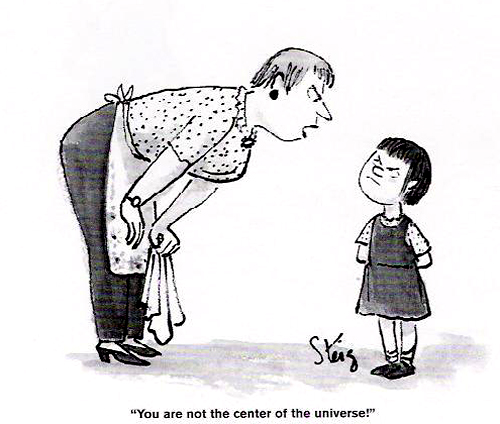RACISM AMONGST KIDS AND ITS EFFECTS
IS RACISM TAUGHT?
CHIMEZIRIM EVELYN OPARA
BRONX HEALTH SCIENCES HIGH SCHOOL
FOUNDER AND CEO OF HEAL 4U MAGAZINE
June 17, 2020
Racism has been and still is one of the biggest problems in our world right now, and it shouldn’t be like that. Imagine having generations of families imprisoned because of their skin color. Imagine being born into a world where you’re already prosecuted, condemned, and damned because people see your skin as a weapon. The problem of racism has been an ongoing issue for centuries, precisely 401 years. Despite this vast amount of time, racism is still incessant in our world. It can be seen everywhere, from the streets of our cities to the corners of our walls. Racism affects all age groups, from adults to little children with no experience in life. Children of color are being taught to fear the authorities, and words such as “white privilege” fill the minds of white children. Little kids are being brought up in an environment where they are bound to because they don’t have the same opportunities as others. They are educated in a system that takes no regard for kids of color like them. Some people are oppressed, while some are the oppressors. Racism has its impact on EVERYONE, either positive or negative, and it’s time we realize that we live in a world filled with injustice, especially among children. I’ll be talking about “The issue of racism among kids and the effects”
The problem of racism among young kids and children basically started around the time of school desegregation. When schools were desegregated children of all races had to mix up and socialize. This was obviously a problem for white kids at that certain time because they had been tuned with the mentality that people of color were of lower standards and that they(colored kids) were inferior. Don’t quote me wrong. I am not saying that all white kids had been tuned with the racist mentality but a large number of white children had that mentality. This mentality has been spread like a disease over centuries and it has carried on into our modern-day education system. Children of color are still being SEGREGATED, despite the government’s claim that this is not true. You will find that schools with a larger population of children of color do not have adequate resources to prepare these children for the harsh world. When there is a step towards changing this, you will find that there are always racist people opposing this. An article by Kevin Beckford in the Amsterdam News titled “New York City’s education system is racist and unresponsive to Black/Brown students” perfectly brings light to this issue. I quote “New York City’s education system is racist and until there is an unapologetic dismantling of its system which breeds racial inequity and disparities to maintain the status quo, New York City public schools will remain an unresponsive system for Black and Brown students…From white women filing lawsuits claiming discrimination to the refusal of some to participate in DOE supported “Courageous Conversations,” the white-elite resistance is nothing more than a continuation of the exact racism that has continued to fail NYC’s students.” end of quote.
I bet you didn’t know that racial bullying in schools has not only a psychological effect on children but it also affects the health and well-being of children. This is why I am so eager to stop this injustice. Not every child is emotionally and psychologically strong to handle the way they are treated because of skin color. In an article by Claire McCarthy, MD titled “How racism harms children”, I quote “Racism can lead to chronic stress for children. And chronic stress leads to actual changes in hormones that cause inflammation in the body, a marker of chronic disease……Children raised in African American, Hispanic, and American Indian populations are more likely to live in homes with higher unemployment and lower incomes than white children. This means that they are less likely to have good housing, good nutrition, good access to health care, and access to good education. Such disparities increase their risk of health problems and of receiving less, and lower-quality, education…….Even when minority children live in wealthier areas, research shows that they are often treated differently by teachers. They are more likely to be harshly punished for minor infractions, less likely to be identified as needing special education, and teachers may underestimate their abilities. And when a teacher doesn’t believe in you, you are less likely to believe in yourself……The juvenile justice system is another place where racism plays out. Minority youth are more likely to be incarcerated, with all the health and emotional consequences this brings, both during incarceration and after. Being incarcerated forever changes a person — and changes how others see them.” end of quote. This summarizes my view on the effects of racism among kids.
There has been a mediocre step(in my opinion) to end discrimination in schools. The government created a title called Title VI of the Civil Rights Act(1964) which states that “race discrimination in education is prohibited”. What people haven’t come to realize is that it doesn’t matter the laws put in place, what really matters is if that law is actually acted upon. Before I started doing my research, I never even knew about the existence of this title. I don’t think that the government is doing enough because racism in schools and among kids is still very evident. Yes, they may claim that they have a law that protects people from racial discrimination. Despite the existence of this law, racial discrimination still occurs at a high level. In fact, up until today, I didn’t even know about this Title IV. This shows how unaware we are of our rights.
Tens of thousands of children are affected by racism from their peers. Did you know that, according to the U.S. Education Department’s Civil Rights Data Collection, “Black students are suspended or expelled at three times the rate of their white peers? Additionally, in 2011-2012, Black girls were suspended at a rate of 12%, much greater than girls of other ethnicities and most categories of boys. “ This proves my point that because people of color are not given a chance there are so many stereotypes that people of color are the most misbehaved. This problem has neither been increasing nor decreasing rather it’s been fluctuating. Despite this, the positive change is very little. Yes, racism among kids has decreased to a reasonable amount, but due to the new uproar for the fight for equality, children of color are now even experiencing more racism from their peers due to what they hear and see at home.
Source:https://beta.grafiti.io/facts/4699-disparities-reports-racial-discrimination-schools
I’ve been focusing on how this problem isn’t getting better, but now I want to shed light on how some people are helping. Groups such as “Council for Students of Color, Unlearning Racism Group, Anti-Racism Consultation Committee (ARCC)” have been working to defeat racism in schools.” Some people have also found a way to reduce and overcome racism in schools with just SIX steps. Step 1:Self Awareness-The first step to preventing racism in schools is self-awareness and self-reflection. Educators must recognize how the intersections of race, ethnicity, gender, sexual orientation, religion, socio-economic status, and being able-bodied impact us individually.
Step 2:In addition to self-awareness, educators must invest in professional development opportunities that increase their cultural competence.
Step 3:Teachers can create learning opportunities that acknowledge race and ethnicity, and prioritize preventing racism through social justice with culturally relevant teaching.
Step 4:To prevent racism educators must talk to students explicitly about racism. Discussions about race can be uncomfortable, but with proper planning, active listening, and a recognition of everyone’s shared vulnerability, an initially uncomfortable conversation can become a transformative learning experience.
Step 5: Racism affects the way that Black and Brown students are disciplined throughout schools in the United States. Schools must be aware of the racial bias that can affect how students are disciplined.
Step 6: Once students have learned about racism they must go out into the world and interact with these issues in real-time. Schools must partner with community organizations that are combating issues of racism and equity in their community.
I’m sure you’re thinking. “6 steps! Who knew it was so easy”. Like I’ve said before, it’s not just about putting up with these rules, it’s about actually abiding by them.
I’ll end my argument by quoting this statement by Eleanor Roosevelt,“For it isn’t enough to talk about peace. One must believe in it. And it isn’t enough to believe in it. One must work at it.”We just shouldn’t talk about ending racial injustice, we must believe in it ourselves because trust me, it isn’t very convincing to preach about something you don’t believe, the emotion isn’t just there. When you’ve got your audience with your belief, you should also work at it. Rules should be made to be abided by.
References
Beckford, K. (2019, September 19). New York City’s education system is racist and unresponsive to Black/Brown students. New York Amsterdam News. https://amsterdamnews.com/news/2019/09/19/new-york-citys-education-system-racist-and-unrespo/
McCarthy, C. (2020, January 8). How racism harms children. Harvard Health Publishing School. https://www.health.harvard.edu/blog/how-racism-harms-children-2019091417788
BENNETT, N. A. (2018, July 6). 6 Ways to Prevent Racism in Schools. Kickboard Blog. https://www.kickboardforschools.com/diversity-equity/6-ways-to-prevent-racism-in-schools/

